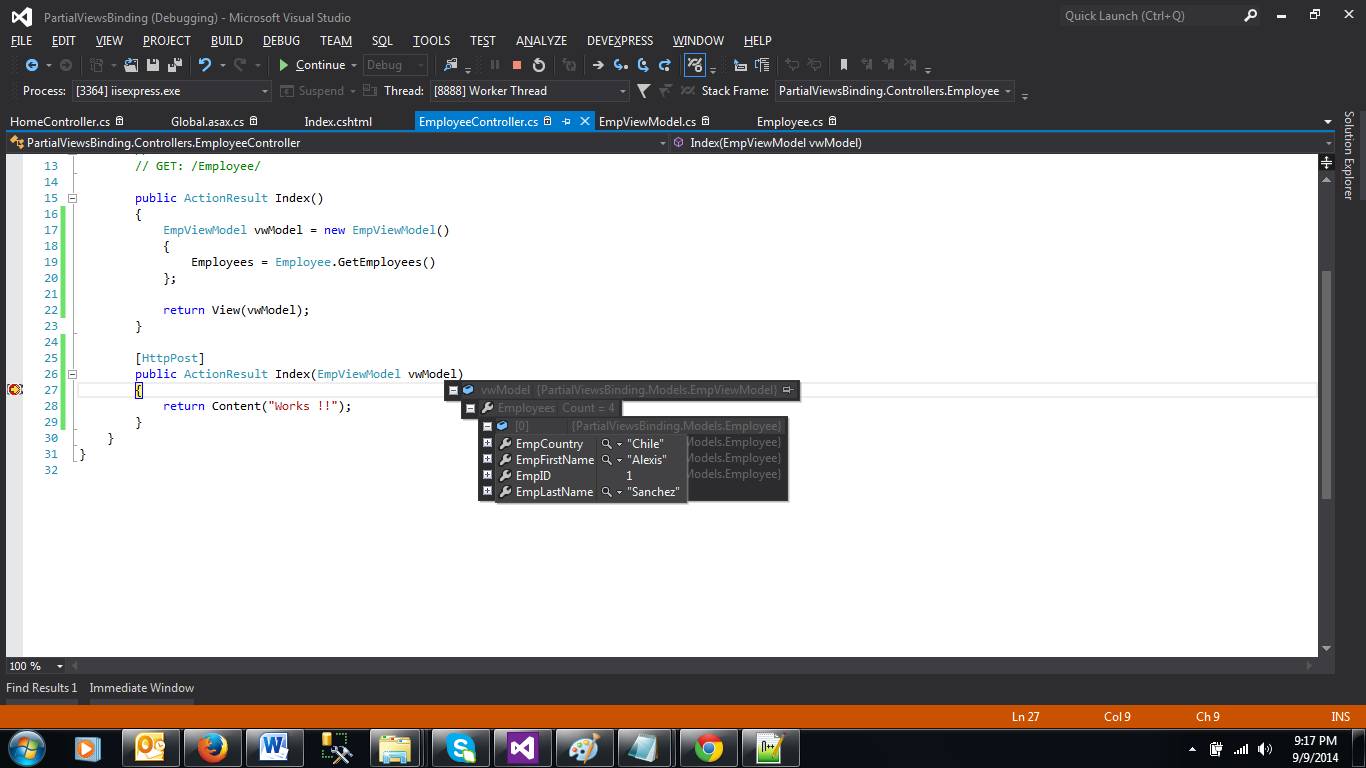In this "How to find tables used in stored procedure in sql server"article i am going to discuss about some SQL queries which are useful in our real time projects. We might have done these things manually but now lets see how useful these queries turns out to be.
First SQL query what i wanted to discuss is -

How to find all stored procedure names which uses the given table
Query -
Before executing this function i have created tables "Student" and "Class"(Here i am not giving the table structures as these are trivial)and created a stored procedures "SP_GetAllStudents" and "SP_GetAllClasses" for demonstration purpose, which returns all the students and class details respectively nothing fancy.
Stored procedure SP_GetAllStudents -
Above function returns below resultset -
Second stored procedure is not filtered because in that stored procedure only "Class" table is used.
Now lets move onto the next SQL query -
How to find tables used in stored procedure in sql server
Query -
As you can see above stored procedure name is passed as a parameter and table names are searched. This will give below result set once executed with
"SP_GetAllStudents" -
Hope this article is useful. Please comment your thoughts.
First SQL query what i wanted to discuss is -

How to find all stored procedure names which uses the given table
Query -
SELECT DISTINCT
obj.Name
,com.Text
FROM sysobjects obj
INNER JOIN syscomments com ON obj.ID = com.ID
WHERE obj.Type = 'P' AND com.Text LIKE '%' + 'yourtablename' + '%'
ORDER BY obj.Name
Lets create a function use this query in function - IF EXISTS (
SELECT * FROM sysobjects WHERE id = object_id(N'FN_GetAllStoredProcsByTableName')
AND xtype IN (N'FN', N'IF', N'TF')
)
DROP FUNCTION FN_GetAllStoredProcsByTableName
GO
SET ANSI_NULLS ON
GO
SET QUOTED_IDENTIFIER ON
GO
-- =============================================
-- Author: Abhijith
-- Create date: 12/25/14
-- Description: Find all stored procedure details which is using given table
-- =============================================
CREATE FUNCTION FN_GetAllStoredProcsByTableName
(
@tableName VARCHAR(50)
)
RETURNS
@SPDetails TABLE
(
Name VARCHAR(50)
,Text VARCHAR(5000)
)
AS
BEGIN
INSERT INTO @SPDetails
(
Name,
Text
)
SELECT DISTINCT
obj.Name
,com.Text
FROM sysobjects obj
INNER JOIN syscomments com on obj.ID = com.ID
WHERE obj.Type = 'P' AND com.Text LIKE '%' + @tableName + '%'
ORDER BY obj.Name
RETURN;
END
As you can see in the above function, table name is passed as an parameter and this table name is searched in all the stored procedures (Type = 'P'). Now lets execute the above function and lets see how the results will look like.Before executing this function i have created tables "Student" and "Class"(Here i am not giving the table structures as these are trivial)and created a stored procedures "SP_GetAllStudents" and "SP_GetAllClasses" for demonstration purpose, which returns all the students and class details respectively nothing fancy.
Stored procedure SP_GetAllStudents -
CREATE PROCEDURE [dbo].[SP_GetAllStudents]
AS
BEGIN
-- SET NOCOUNT ON added to prevent extra result sets from
-- interfering with SELECT statements.
SET NOCOUNT ON;
SELECT
Classes.ClassID
,Students.StudentID
,Students.StudentName
FROM Classes
INNER JOIN Students ON Classes.ClassID = Students.ClassID
END
Now lets execute the function - SELECT * FROM dbo.FN_GetAllStoredProcsByTableName('students')Above function returns below resultset -
Second stored procedure is not filtered because in that stored procedure only "Class" table is used.
Now lets move onto the next SQL query -
How to find tables used in stored procedure in sql server
Query -
SELECT DISTINCT obj2.Name FROM sys.sysobjects obj INNER JOIN sys.sysdepends dep ON obj.ID = dep.ID INNER JOIN sys.sysobjects obj2 ON obj2.ID = dep.DepID WHERE obj.Type = 'P' and obj.Name = 'SP_GetAllStudents'Now lets create a new function as we created earlier -
IF EXISTS (
SELECT * FROM sysobjects WHERE id = object_id(N'FN_GetAllTableNamesBySpName')
AND xtype IN (N'FN', N'IF', N'TF')
)
DROP FUNCTION FN_GetAllTableNamesBySpName
GO
SET ANSI_NULLS ON
GO
SET QUOTED_IDENTIFIER ON
GO
-- =============================================
-- Author: Abhijith
-- Create date: 12/25/14
-- Description: Find all tables used in given SP name
-- =============================================
CREATE FUNCTION FN_GetAllTableNamesBySpName
(
@SPName VARCHAR(50)
)
RETURNS
@TableNames TABLE
(
Name VARCHAR(50)
)
AS
BEGIN
INSERT INTO @TableNames
(
Name
)
SELECT DISTINCT
obj2.Name
FROM sys.sysobjects obj
INNER JOIN sys.sysdepends dep ON obj.ID = dep.ID
INNER JOIN sys.sysobjects obj2 ON obj2.ID = dep.DepID
WHERE obj.Type = 'P' and obj.Name = @SPName
RETURN;
END
As you can see above stored procedure name is passed as a parameter and table names are searched. This will give below result set once executed with
"SP_GetAllStudents" -
SELECT * FROM dbo.FN_GetAllTableNamesBySpName('SP_GetAllStudents')
Hope this article is useful. Please comment your thoughts.





.png)







